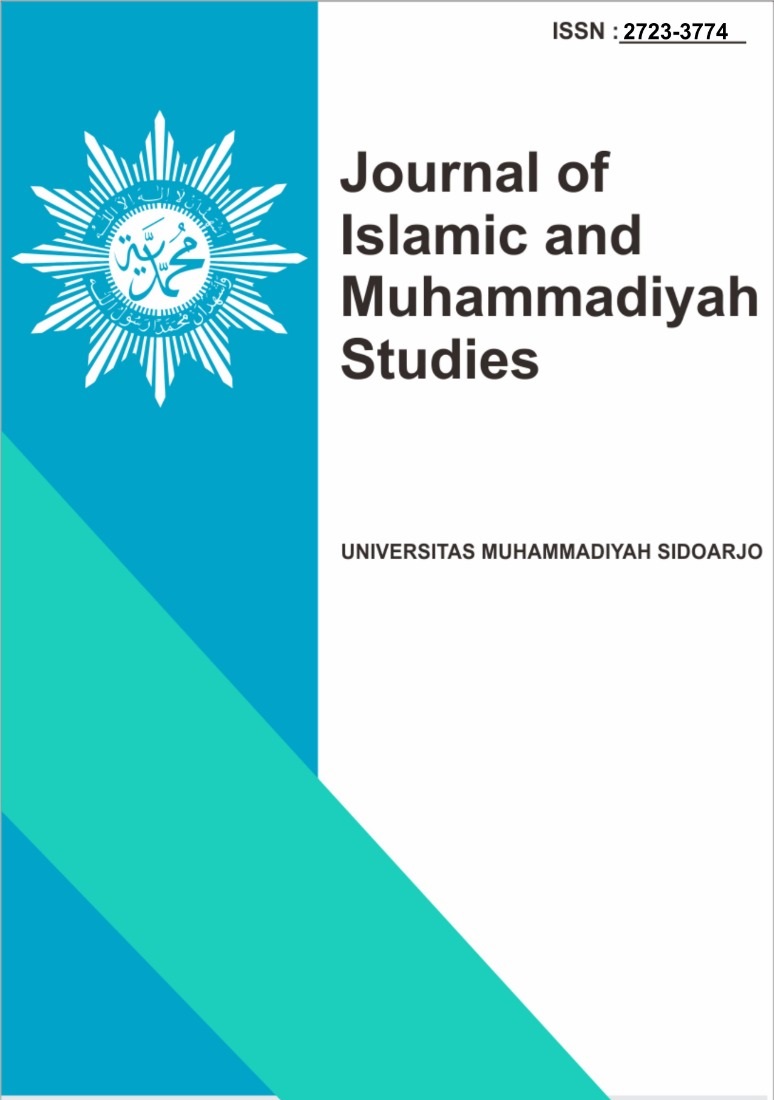Students’ English Skills Development Through the English Time Program
Peningkatan Kemampuan Bahasa Inggris Siswa Melalui Program Waktu Bahasa Inggris
DOI:
https://doi.org/10.21070/jims.v7i2.1633Keywords:
English Time, Listening, Reading, Writing, SpeakingAbstract
Background: English is an essential skill that needs to be mastered from the elementary level to prepare students for global competition. Specific Background: However, many students in primary schools still face difficulties in listening, reading, writing, and speaking English fluently. Knowledge Gap: Few studies have explored structured school programs that integrate fun and interactive learning activities to improve students’ English proficiency. Aim: This study aims to describe the implementation of the English Time program at SD Muhammadiyah 2 Tulangan as an effort to improve students’ English language skills. Results: The findings show that four main strategies were implemented: listening exercises, reading practices, writing activities, and speaking sessions. These strategies significantly helped students become more confident and engaged in learning. Novelty: This study provides a practical example of a school-based program that successfully integrates enjoyable activities into daily routines. Implications: The results may serve as a reference for other schools to design similar programs to strengthen students’ English skills.
Highlights:
• English Time program improves four English skills
• Students become more active and confident in learning
• Program provides a replicable model for other schools
Keyword: English Time, Listening, Reading, Writing, Speaking
References
[1] C. Name, et al., “Analysis of the covariance structure of health-related indicators in the elderly living at home, with a focus on the subjective sense of health,” Pap. Knowl. Towar. a Media Hist. Doc., vol. 3, no. 2, p. 6, 2021.
[2] T. Lestari, I. Asfah, & E. Ekawati, “Pembelajaran kosa kata bahasa Inggris dengan media cerita rakyat bagi siswa kelas V sekolah dasar,” J. Pemikir. Dan Pengemb. Pembelajaran, vol. 4, no. 1, pp. 135–144, 2022. [Online]. Available: http://ejournal-jp3.com/index.php/Pendidikan/article/view/208
[3] M. Susini, “Strategi meningkatkan kemampuan berbahasa Inggris,” Linguist. Community Serv. J., vol. 1, no. 2, pp. 37–48, 2020. doi: 10.55637/licosjournal.1.2.2732.37-48
[4] “Editorial Board,” Biomed. Signal Process. Control, vol. 73, p. 103505, 2022. doi: 10.1016/s1746-8094(22)00027-1
[5] M. R. R. Budianto, S. F. Kurnia, & T. R. S. W. Galih, “Perspektif Islam terhadap ilmu pengetahuan dan teknologi,” Islamika: J. Ilmu-Ilmu Keislaman, vol. 21, no. 01, pp. 55–61, 2021. doi: 10.32939/islamika.v21i01.776
[6] S. Suharni, “Upaya guru dalam meningkatkan motivasi belajar siswa,” G-Couns: J. Bimbing. dan Konseling, vol. 6, no. 1, pp. 172–184, 2021. doi: 10.31316/g.couns.v6i1.2198
[7] K. Tauhid, “Kemampuan pengucapan bahasa Inggris di tingkat sekolah dasar,” J. Pendidik. Bahasa, vol. 1, pp. 357–364, 2022.
[8] I. P. E.-Issn, “Pengaruh game berbahasa Inggris online terhadap kemampuan bahasa siswa,” Computer Based Information System Journal, vol. 02, pp. 29–36, 2020.
[9] D. M. Santika, M. Agung, & K. Apriliani, “Video pembelajaran untuk peningkatan kemampuan bahasa Inggris tingkat sekolah dasar,” J. Pendidik. Dasar, vol. 5, pp. 342–352, 2021.
[10] S. W. Siahaan, K. D. R. Sianipar, & P. P. P. A. N. W. F. I. R. H. Zer, “Penerapan algoritma C4.5 dalam meningkatkan kemampuan,” J. Teknol. Informasi, vol. 13, no. 2, pp. 229–239, 2020.
[11] A. T. Divina, D. A. Setyawan, & L. R. Nurhidayah, “Hubungan antara bilingualisme dengan kemampuan bahasa reseptif pada anak kelas 2 di SD Negeri 2 Leuweunggajah Cirebon,” J. Psikol. Pendidik. Anak, vol. 1, pp. 12–24, 2022.
[12] M. Waruwu, “Pendekatan penelitian pendidikan: Metode penelitian kualitatif, kuantitatif, dan kombinasi,” J. Pendidik. Tambusai, vol. 7, no. 1, pp. 2896–2910, 2023.
[13] I. S. Annisa & E. Mailani, “Analisis faktor penyebab kesulitan siswa dalam pembelajaran tematik dengan menggunakan metode Miles dan Huberman di kelas SD Negeri,” Innov. J. Soc. Sci. Res., vol. 3, pp. 6469–6477, 2023.
[14] R. Industri, M. P. Learning, & S. Wahyuningsih, “Meningkatkan kemampuan bahasa Inggris calon guru Madrasah Ibtidaiyyah di era global,” J. Pendidik. Guru MI, vol. 8, pp. 1–18, 2020.
[15] A. Pratama & N. Dewi, “Daily English Time as a medium to improve primary students’ speaking confidence,” Int. J. Elem. Educ., vol. 7, no. 3, pp. 221–230, 2023. doi: 10.31004/ijee.v7i3.562
Downloads
Published
How to Cite
Issue
Section
License
Copyright (c) 2025 Rahmad Hidayah, Hidayatulloh Hidayatulloh

This work is licensed under a Creative Commons Attribution 4.0 International License.
Authors retain copyright and grant the journal right of first publication with the work simultaneously licensed under a Creative Commons Attribution 4.0 International License that allows others to share the work with an acknowledgement of the work's authorship and initial publication in this journal.






